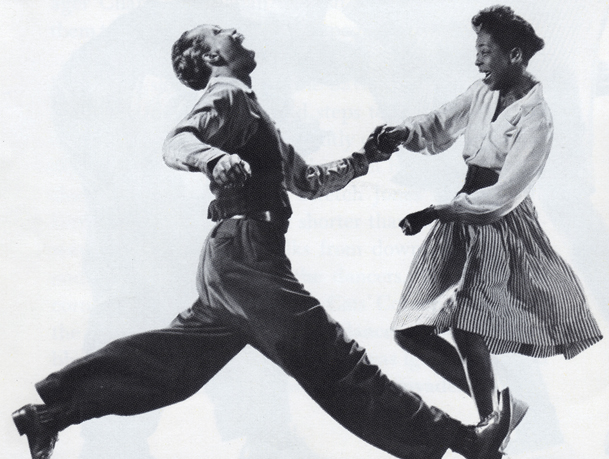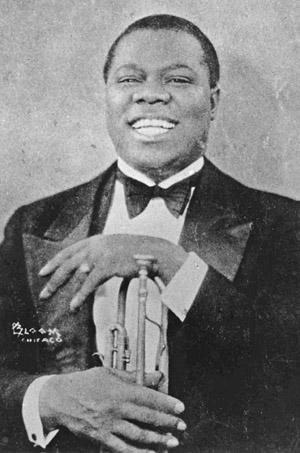Nothing gets in the groove like a catchy ‘riff.’ The hot rhythm of a good riff lifts us out of our seats and onto the dance floor. Riffs are one of the building blocks of jazz. They are everywhere—as background figures, parts of jazz solos, and even entire riff tunes.
A riff is a short melody—just a few notes—repeated over and over in a rhythmic manner. The origin of the riff can be traced to early African-American gospel and blues forms where short, repeated, chant-like melodic fragments were typically sung or played as a background figure to support a soloist. The jazz riff evolved out of this call-and-response practice.
With their New York debut at Harlem's Savoy Ballroom in the late 1930s, the great Count Basie Orchestra and their riffing style breathed new life into the Swing Era. It is said that in rehearsal Basie would send each section of the band into a separate room, charged with the task of coming up with their own new riff. These sectional riffs would later be combined to create a shouting call-and-response effect. The result—riff tunes like "One O'clock Jump" with its famous final 'shout' chorus.

The Count Basie Orchestra at the Famous Door in New York, late 1940s. Courtesy Good Morning Blues: The Autobiography of Count Basie, Albert Murray.
Louis Armstrong, whose pioneering genius inspired generations of jazz musicians from the 1920s to the present day, often used riffs in his solos to build tension. A good example of Louis' solo riffing can be heard on his 1929 Okeh recording of "St. Louis Blues." As an added attraction to his big-band dance concerts, Benny Goodman often featured small combinations—or combos—of three to six pieces. The later Goodman small combos, featuring guitarist Charlie Christian, developed many riff-based tunes like "Gilly," named after Goodman's daughter.
This week on Riverwalk Jazz The Jim Cullum Jazz Band uses simple, familiar riffs to build entire arrangements and tunes—from originals like “Keep Off the Grass” to standards like “Dinah.” Special guest Bob Barnard joins the band on trumpet.
Riffs are really very simple,
infectious melodic ideas. There
is a 'chant-like' background
figure in the Band's
interpretation of "Perdido
Street Blues" that’s a good
example of how the riff' began
to evolve in early jazz. Sitting
in on cornet special guest Bob
Barnard helps brings back the
hot, riff-based sounds of New
York's 1930s jazz mecca—52nd
Street—on "Undecided," a tune
star trumpeter Charlie Shavers
wrote for small combos of the
day.
Jim Cullum talks about what it
was like for a new player
joining the Count Basie Band
when there were no written
musical arrangements of the
Band's repertoire. Trumpeter
Harry 'Sweets' Edison described
the process years ago on one of
our Riverwalk radio shows.
Shortly after Edison started
working for Basie, Sweets
complained to him that he wanted
to quit because he felt lost on
the bandstand. Sweets couldn’t
find his place in the Band,
meaning he couldn’t find harmony
notes on the riffs that weren’t
already being played by another
player. Basie told Sweets
Edison, “If you find a note
tonight that works play the same
damn note every night.”
Photo credit for home page teaser image: Harlem Dancers Leon James and Willa Mae Riker. Photo courtesy The Swing Era by Time-Life
Text based on Riverwalk Jazz script by Margaret Moos Pick ©2010



